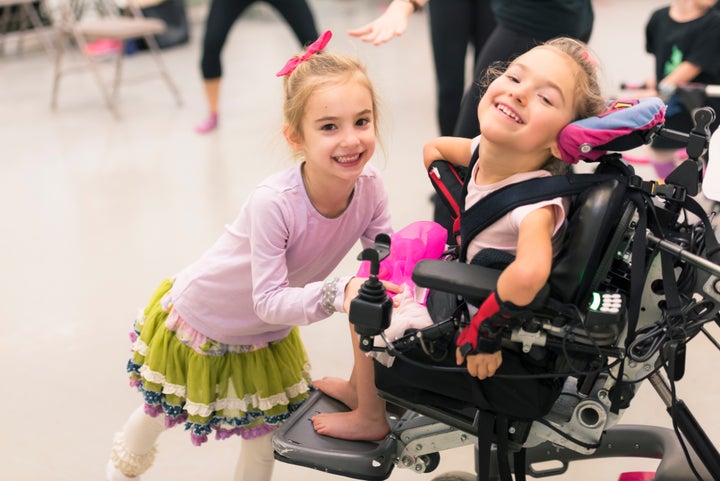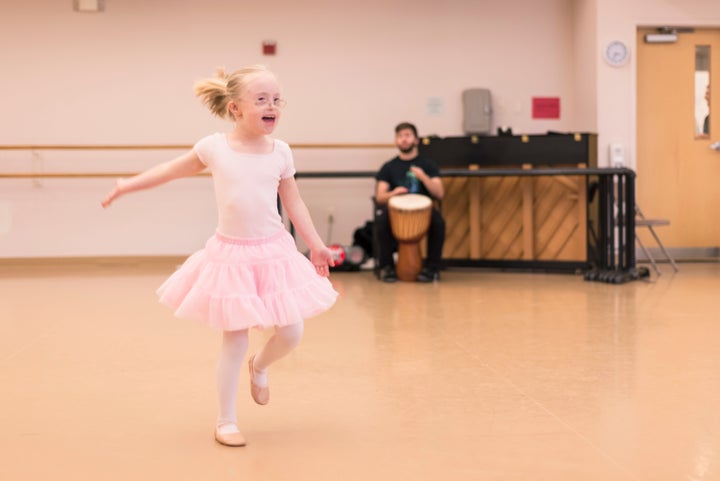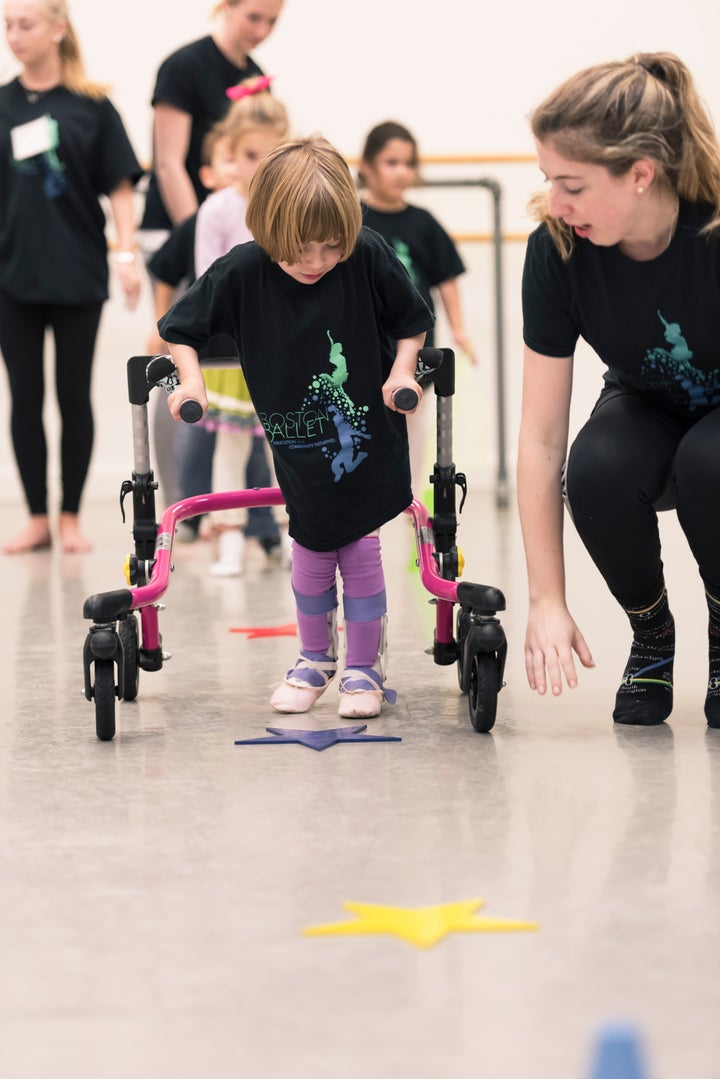
Photo by Liza Voll; Courtesy of Boston Ballet
Boston Ballet believes that dance is an art form that belongs to everyone, and now they’ve built that philosophy into the very foundation of their expanded school studio in Newton, MA.
The new Newton Studio at 153 Needham Street, which had its grand opening in early September, was designed to be a “radically inclusive” center for dance education, says Ming Min Hui, the Chief of Staff at Boston Ballet.
“We wanted to do it once and we wanted to do it so that it's good for the next 30 years,” says Hui as she tells me about the decision to relocate and build the Newton studio. “How do we make sure that it's extremely forward-thinking, that it is serving the mission of Boston Ballet? It's something that everyone, universally, should be able to participate in, enjoy, and have to enrich their lives.”
That’s where Universal Design comes in.
It’s an idea in design that, applied towards architecture, says buildings shouldn’t just meet the requirements of the Americans with Disabilities Act, but surpass them.
“To my understanding,” says Hui, “there isn't any other dance studio in the U.S. that so clearly – from the onset – was using universal design as a core tenet in its design process.”
As they designed the new studio, Boston Ballet and their architecture firm, Gensler, invited students from their Adaptive Dance Program to participate in the process.
The Adaptive Dance program is an initiative that offers inclusive dance classes to 150 students who range in age from two years old to adults. There’s a series of classes for individuals with Autism Spectrum Disorders, a series for individuals with Down syndrome, and inclusive classes for people of all abilities and needs. Each class is taught by Boston Ballet School’s core faculty and supported by physical and occupational therapists and volunteers.
Boston Ballet created “user expert groups,” made up of students and families from this program along with experts in the field of accessibility, designers, and experienced faculty members.
“We were able to go through at the design stage of the process, and say: ‘Here's the thinking on the floor plan. Here's some of the thinking on signage, fixtures, materials, all of those things.’ And we're able to get very robust feedback,” Hui says.
Some of that robust feedback surprised them. For example, commercial-grade carpets often create fumes that can overwhelm an autistic child’s senses.
“We tried to be cautious about making assumptions about what we thought people would want, what we thought people would need, and what we thought would be important,” says Portia Abernathy, Boston Ballet’s Assistant Director of Education and Community Initiatives.
What they learned from their students and experts in the field has been fully incorporated into the new Newton studio.
There are no stairs or elevators in the building. Hallways are wide enough to allow people plenty of space as they move from class to class. Each studio space has lighting systems that can be adjusted to accommodate different sensory thresholds.
There are quiet areas for students who need to step away from the hustle and bustle that can arise in a school lobby. All gender restrooms and shower rooms are centrally and prominently placed in the floor plan. Flooring throughout the space is skid-free, avoids bold patterns, and provides a balance of hard and soft surfaces.
“We have seating at high levels, at low levels, with arms, without arms. We’re really trying to make sure there's something for everyone,” says Abernathy.
One example of an inclusive design element is the absence of hand dryers – those wall mounted blowers you find in bathrooms. The sudden and unexpected noise from the machines can be frightening and disruptive to children on the Autism spectrum.
On a recent tour of the facility, Hui recalls, a mother “walked into the various locker rooms and bathrooms and noticed that there were no automatic hand dryer machines. She teared up and said, ‘Thank you for thinking of my daughter.’”
“You know,” Abernathy says, “if you don't have a disability or a child with a disability, [you] can sometimes take those basic things for granted.”
That’s what makes universal design based on radical inclusivity so special. It puts into practice what can often just be an idea.
“Dance should be accessible to everyone, and it hasn't been,” says Abernathy. “So we know that to achieve that mission, we're going to have to think and act differently. For us, that's meant changing programming, policies, practices, and even our spaces to make sure that we can really carry that mission out.”
For more information about the Adaptive Dance Program, visit https://www.bostonballet.org/education/adaptive-dance.

Photo by Liza Voll; Courtesy of Boston Ballet

Photo by Liza Voll; Courtesy of Boston Ballet
